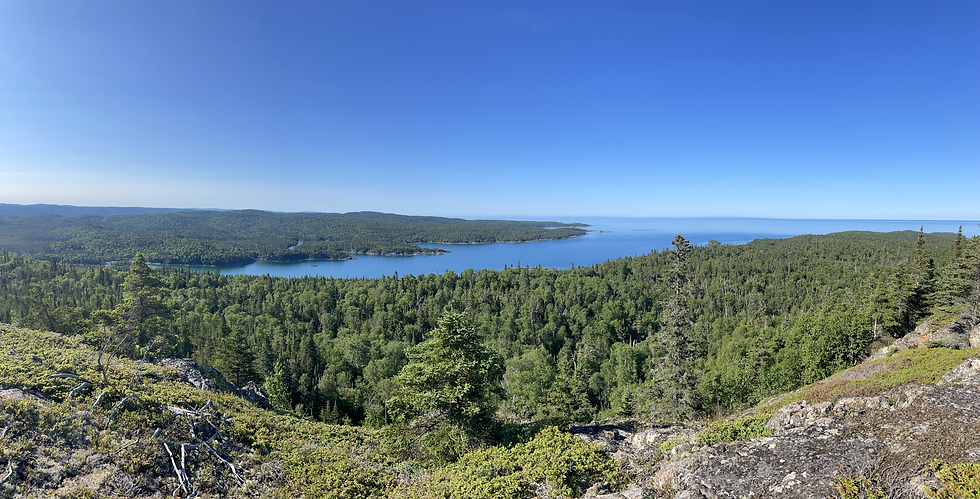The COVID-19 Pandemic and the Changing Landscape of Trails
- Jane McCulloch

- Feb 14, 2022
- 3 min read
Updated: Mar 18, 2022
by Jane McCulloch

This pandemic has taught us all a lot - including reinforcing the value of trails and greenspaces. Over the past two years, the way people view the outdoors has also changed. In the early days of the pandemic, parking lots at trailheads were overflowing and it was impossible for people to safely physically distance on jam-packed trails, lookouts, and at trailheads.
Increased Trail Usage during the COVID-19 Pandemic
This unintended outcome of the pandemic did not come as a surprise to those of us in the industry, but it did require a new approach to managing the increases trail activity. From placing signs on trails to encourage one-way traffic and remind people to physically distance from other users outside of their bubble, to setting up reservation systems to book departure windows to hit the trail, many trail organizations were forced to adapt.
Innovation, Adaptation and the Need for Resilience in the Trail Sector
People have continued to flock to trails and while trail managers have continued to adapt, innovating short-term solutions to meet immediate needs, longer term changes need to be made to support new trail users as well as people who are using trails more frequently.
Regular maintenance and general upgrades are not the only things that trail managers need to think about. Trail managers are now thinking about expanding their trail networks, enlarging their parking lots, upgrading infrastructure such as bridges and culverts to accommodate the increased traffic on the trail, and proactive approaches to waste management.
Welcoming New, Emerging and Diverse Trail Users
These logistical and infrastructure issues, however, are not the only things that trail managers need to consider.
We have seen an increase in the diversity of people using trails throughout the pandemic and many of these new users have different needs and expectations.
Trail managers need to begin to think about the needs of the BIPOC and LGTBQ2S+ communities, as well as the needs of people with disabilities and other people that may not have been considered in the original design of legacy trails and older trail systems.
Things such as improved lighting for safety, secure bathrooms, and enhanced signage that is both educational and informative, are important to ensure that everyone feels welcome and safe while enjoying the outdoors. These items may not be on your radar as trail managers, but they need to be.
It’s important that these communities, and the diverse individuals that comprise them, are engaged in discussions around what would make trails, and diverse forms of trail use, better experiences for them.
Whether it is reaching out to local community associations or advocates, accessing resources through inclusion and diversity programs, or engaging people out on the trail, it’s important to not make assumptions about the needs of others.
Leveraging Resources for Recovery and Growth
Reaching out to decision-makers and funders to highlight the need to support your organization in your “COVID-19 recovery and adaptation” initiatives is essential, as is including a thorough explanation of how the needs of your trail users have changed as a result of the pandemic. It’s great to say that trail use has increased, something easily demonstrated by trail counts, but if this does not translate into additional support, trails will degrade, user groups will not feel welcome and included, and the growing public support for trail use that we have seen over the course of the pandemic will fade.
This is an exciting time for trails, and just like other businesses and organizations have had to pivot, so will trail organizations and managers to meet the needs of current and future trail users.
Get In Touch
If you are interested in support for grant writing or want to learn more about adapting to the changing landscape of trails, responding to shifting trail demands, and recovering from the impact of COVID-19 on your trail organization, please reach out to us at: TheTrailResearchHub@gmail.com.
Additional resources
Creative Trails Canada - https://creativetrailscanada.com/
Terminus Consulting - https://www.terminusconsulting.ca/
Increased trail use, and the physical and mental health benefits of trails during the COVID-19 pandemic - https://tctrail.ca/news/canadians-covid-19/
Canadian Tourism Relief Fund - https://www.ic.gc.ca/eic/site/icgc.nsf/eng/07736.html
Ontario Tourism Economic Development and Recovery Fund - https://www.ontario.ca/page/available-funding-opportunities-ontario-government#section-28
ACOA 2021: building a more resilient, innovative and inclusive Atlantic economy in a year of recovery - https://www.canada.ca/en/atlantic-canada-opportunities/news/2022/01/acoa-2021-building-a-more-resilient-innovative-and-inclusive-atlantic-economy-in-a-year-of-recovery0.html
Tourism Nova Scotia COVID-19 Business Supports - https://tourismns.ca/covid-19-tourism-business-supports


